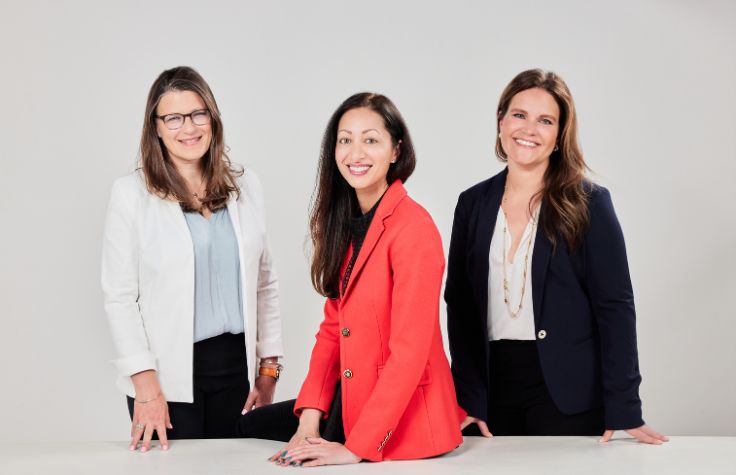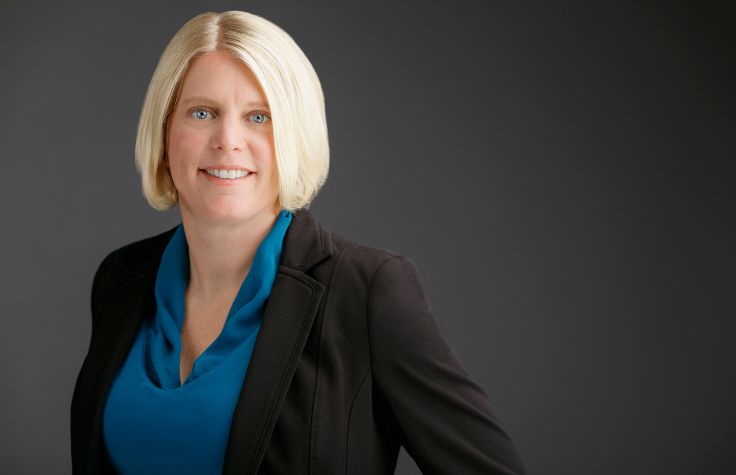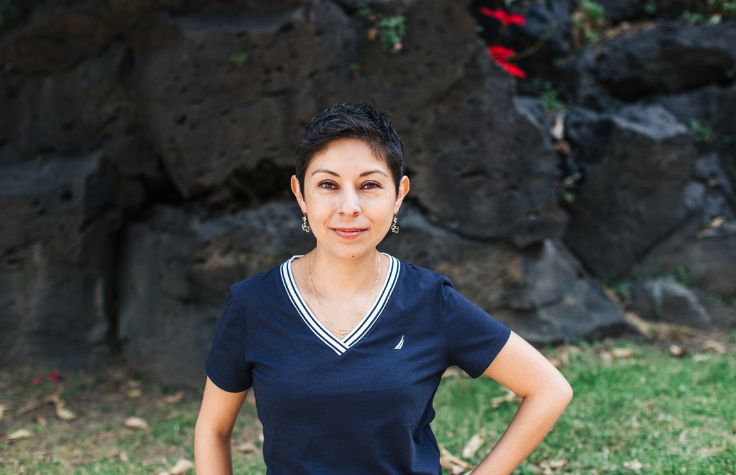
22 May 2023
In 2005, Yssa DeWoody was about to take on a faculty position in mathematics when her three-month-old daughter, Marie, began having seizures. Within a month, Marie was diagnosed with a rare genetic condition called Ring14 syndrome, caused by a chromosomal anomaly where one of her 14th chromosomes had two terminal deletions and the ends fused together into a ring. “I was still trying to get a handle around how to even function,” she says, “trying to give my time to my other daughters, trying to gracefully let go of my career, as I saw it not even being possible anymore.” DeWoody, a seasoned mom and college professor, was suddenly facing a lot of unknowns.
Bina Shah, mom to Karina, a loving, nonverbal, petite ten-year-old, felt similarly disillusioned in 2013 when her daughter was diagnosed with a large deletion and even larger inverted duplication on chromosome 8p. “It was like a black hole void of any understanding of the disorder,” she says. “I assumed there must be researchers studying this and doctors who had answers and I simply had to play detective to find them.”
Shah learned it would not be that simple. There were no experts. In 2018, her family funded a research study and soon after, she took a risky but compelling leap, leaving her career in finance to galvanize a patient community and start the nonprofit Project 8p. “I just wanted to study this disease, start finding answers, and be able to provide quality care for our 8p heroes, with the mission of finding treatment,” she says, and sighs. “And then I learned chromosomes are really hard.”
Shah and DeWoody’s daughters have neurodevelopmental chromosomal disorders caused by copy number variants (CNV) or structural variants. Chromosomal disorders are polygenic, meaning that many genes contribute to their various symptoms—as opposed to monogenic, or single-gene, disorders like cystic fibrosis. CNV disorders are just a few of the more than 6000 individual rare genetic conditions that affect 300 million people worldwide.
Life with a CNV disorder is unpredictable. DeWoody describes a day of her daughter crying inconsolably, with no way to communicate what’s wrong, followed by a day of “smiling at the world again.” Her daughter may pick up skills like holding an object or swallowing food, only to lose the skills later. Marie has gone an entire month without seizures—lifting the family’s hopes—only to then experience 20 seizures in two weeks. “People don’t realize the whiplash associated with these rapid changes in Marie’s health and abilities,” she says. “It’s hard to understand just what a toll the constant roller coaster takes on not only the child, but the whole family.”
"Lives are at stake. Quality of life is at stake. It deserves a little passion."
As the cofounder of Ring14 USA, DeWoody attends various annual conferences where she is able to meet researchers, patients, and advocates like Bina. Through this networking, they connected with Vanessa Vogel-Farley, senior director of research and data analytics at Global Genes and principal investigator for its RARE-X program. Vogel-Farley had a history of working with families participating in research and always felt that science needed to do better in rare disease. She eventually went into advocacy for Dup15q Alliance.
On a mission to find answers and develop better treatments, DeWoody, Shah, and Vogel-Farley went on to form the patient-led Commission on Novel Technologies for Neurodevelopmental Copy Number Variants (CNV Commission) to gather the leading minds in neurodevelopmental chromosomal disorders caused by CNV structural variants.

Creating a road map
Early on, they learned that CNVs are insurmountable by the current conventional research methods, such as using animal models to study human disease. “I was desperately trying to get somebody to engineer a mouse model that wouldn’t die, and they couldn’t,” Shah recalls. As with many mouse models of neurodevelopmental disorders and epilepsy, these phenotypes don’t show up in mice. Using induced pluripotent stem cells to model the disorder’s ring formation is also a poor fit, because the model rings quickly become unstable and change form.
“Not only does my daughter have a structural abnormality, but her cell line is missing 4.3 megabases of genetic information,” says DeWoody. “There’s this sense with these larger CNVs, like, ‘What the hell do I even attack? What am I going to go after for real therapeutic change?’ You just get this sense that you’re being completely left behind. It’s not that the scientific community has ignored us per se, it’s almost that they’re as overwhelmed as we are.”
All three groups, dup15q, Ring14, and 8p, often began conversations with researchers, funders, and other stakeholders with the same question: “If there were millions of dollars to tackle this, what would you do to move the needle that you have not already tried?” And the response was generally that, due to the complexity of these mutations, the scientific approaches required are on the frontier or do not exist yet—but it is critical to develop them. “Money wasn’t the problem,” says Vogel-Farley; “it was the science and the technology and the approaches.”
In 2020, Shah and Vogel-Farley were awarded a Chan Zuckerberg Initiative Rare As One grant and quickly brought DeWoody onboard. With that support, they set up more than 100 meetings with various experts and organized five working groups—focusing on community engagement, in vivo models, in vitro models, genomics and bioinformatics, and phenotyping, respectively—which would analyze the situation and examine what tools existed and what they’d need to move forward.
The scientists they gathered met every other week with the Commission for more than four months to lay out a road map for research into CNVs or structural abnormalities as a whole. They would need to establish a dynamic and shareable database collecting genomic and phenotypic data from families in order to study the diseases. The driving questions were: Why do so many of these children, whether they have a chromosomal disorder with a large deletion, a large duplication, a ring, or some combination of variations, present with similar neurological phenotypes? Is there some kind of convergent biology at work? What could they all learn together? What therapies are possible?
In these working group meetings, “We pushed the scientists to talk openly about their failures and disagreements and provocative ideas,” says Vogel-Farley, who remembers telling the group, “We don’t want to admire the problem, we want to fix it. We love academic research, but we don’t want more papers. We want scientists to ask, ‘Can this be applied for therapeutics?’”

Moving mountains
In summer 2021, they hosted a joint conference for the first time between three nonprofits (Project 8p, Ring14 USA, and Dup15q Alliance). The CNV Commission brought together scientists, doctors, patients, and their families to mix and mingle, share sorrows, and collect data for the database.
During the event, called Moving Mountains, they had a station where a phlebotomist gathered blood samples. Over 100 biosamples were collected from 35 families who chose to participate in these research efforts. A number of families also visited a multidisciplinary clinic at Children’s Hospital Colorado at Aurora for neurological exams and evaluations, where clinicians collected research data.
These services coincided with community and patient support sessions where more than 100 families could discuss the daily struggles they all face, as well as meet in breakout sessions organized by syndrome.
The scientists, who had graciously worked pro bono for months, stayed for all the sessions and meals. Beyond enjoying a sense of community, the conference’s ultimate goal was to jump-start the establishment of a cross-disorder data set combining blood samples with patient- and doctor-reported data.
“All of this data is tied together,” says Vogel-Farley, “so that when you look at the whole-genome and whole-transcriptome data, it’s not information hanging out there by itself—it’s attached to all of these other sources of information that give you a really well-rounded picture.” In addition to whole-genome sequencing, the CNV Commission in partnership with Illumina will use long-read technology to detect, assess, and characterize large CNVs and structural variants in neurodevelopmental disorders.
Historically, phenotypic data recorded along with genetic data has been limited in scope—it may only describe what the child looked like that day, if they were having seizures or feeling happy, for instance. But things can change by the hour, month, day, or year. Vogel-Farley explains that seizure onset can and does happen any time from infancy through adulthood in all these disorders. The CNV Commission will continue collecting data over time, which will remain associated with each sample. Since the Commission is looking at deep genetic data, it’s important that the database also encompass information about family members. “I’ve been in longitudinal data collection for a long time, and we don’t usually ask moms and dads if they have social communication issues, for example,” Vogel-Farley says. “But we’re treating parents as research subjects as well.” The effects of having a child with one of these complex diagnoses needs to be looked at through quality of life and burden of illness questions for the family.
So far, the commission has recorded about a third of the planned first-ever cohort of 300 paired whole-genome sequences and whole-transcriptome sequences from patients with CNVs and relatives as trios or quads. They’re still enrolling patients and trying to make it as easy as possible to contribute, offering a mobile phlebotomy service in nearly every US state. The Commission sends each sample to Illumina for library preparation, whole-genome and whole-transcriptome sequencing, and analysis of the variant impact.
Making the data work for them
The CNV Commission’s portal is free and open to researchers who want to analyze the de-identified data sets where patients have opted in. They can dig into the various phenotypic data, which can also be aggregated with other data sets via the RARE-X Data Analysis Platform, a research program of Global Genes, which leverages Terra from the Broad Institute.
Almost two years into its development, the database is still a work in progress and will continue trying to meet the needs of all stakeholders. It needs to be robust, functional, and interoperable. Ideally, physicians and researchers will be able to use the portal as a resource if, for example, they have a patient whose genetic test showed a particular genotype: They could look up similar genotypes on the portal to help them understand the clinical significance in the context of their genetic report. “If we have the fortune of starting something from scratch, let’s design this with the patient at the forefront of everything we do,” says Shah. “It is the only way to drive translation, and if a research group wants access to it, it’s not a closed system. The infrastructure is scalable and it’s designed to get smarter as more contributors share and utilize it.”
The cofounders hope this will lead to future breakthroughs, and they never forget that it was a collective effort. “It is no small thing to ask a whole family to give their blood and their time,” says DeWoody, “and all of this for something that ends up in an academic journal, that they may not even understand? We want to make sure we’re giving back as much as we can. Whatever we do has to benefit the families.”
Editor’s note: As we were publishing this story, Yssa DeWoody’s daughter Valerie Marie DeWoody tragically passed away from complications caused by her Ring14 genetic change. Marie was 18 years old.
To learn more about the CNV Commission, click here or email commissiononnoveltech@gmail.com.


